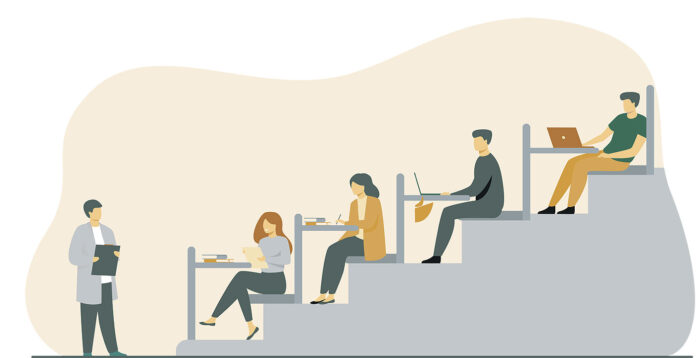It’s been about a year and a half since the first hard lockdowns were enforced and the country is still struggling to stop the surging contagion of what is now a multiple number of COVID-19 variants spreading in many regions. Among the sectors hardest hit is the educational system, which is now starting its second academic year in pandemic conditions.
School opening season during pre-pandemic times was always about the perennial problems of insufficient classrooms, the need for more teachers, and other issues burdening the school system because of a student population that, according to Department of Education (DepEd) data, was growing at a rate of 3% per year and was approaching 28 million. “As of this writing, the latest enrollment figures in the DepEd’s “Quick Count” for School Year 2021-2022 as of Sept. 3, was only 16,038,442 which is only just over 61.2% of the 26,227,022 enrollees last year. Comparing last year’s total enrollees with School Year 2019-2020 which was at 27,790,114, that’s an alarming 1,565,092 learners who did not go back to school during the first year of the pandemic. The private education sector on the other hand, already plagued by school shutdowns, was only at 671,660 enrollees.”
This situation presents a bigger dimension in an already gap-ridden education system not just in school facilities but in the quality of education as sadly reflected in the 2019 Trends in International Mathematics and Science Study where Philippine scores (Grade 4 level) were significantly lower than other countries. Amidst all the hardship of the pandemic, we are confronting an educational crisis that may result in an education gap in what others are beginning to call a “pandemic generation.”
More than a million students staying away from classes last year and some predict may even be more this year, is one thing, but the more extensive problem is how our schools, teachers, students, and parents are able to adjust to the sudden shift to studying at home or what the DepEd has called the “Blended Learning” mode of learning. Depending on accessibility and capacity of the school, a combination of printed distance learning modules, online classes, and lessons broadcast in social media and television may be adopted. How will this shift affect the quality of an already sub-par basic education system? Are our higher educational institutions delivering the lessons and are their students able to at least acquire the required competencies with the sudden shift to digital learning platforms?
The prospect is not encouraging as our education ecosystem was simply not ready for the quick shift to e-learning platforms. Access to reliable internet connections, the devices needed, and how to even use the digital technologies was a shock for the schools, teachers, students, and parents. The substantial resources needed to cope with this shift has created an education digital divide in a population already in dire conditions. These resource issues and the health risk has caused dropouts and a kind of learning crisis never seen before.
As a professor, I believe the quality and dynamic interaction in a conducive learning environment where both the student and teacher benefit and grow cannot be cloned by any e-learning platform. The nuances of live feedback where you see the facial expressions, body language, and other physical cues that tell you whether you are making an intellectual connection cannot be experienced through the monitor, speaker, and microphone, even with the best equipment and most stable internet connection which, for the majority, is already a challenge.
The education system must be supported to continue with formal education as these custodians of our country’s future are now the students in this education crisis. For now, harnessing digital technologies for the continuity of our educational institutions is the best option, but the challenges of limited access to technology, connectivity, and skills to effectively benefit from e-learning platforms will need the intervention of the private sector’ digital technology companies.
The DepEd has been engaging in partnerships to build up its organic capacity to deliver the K-12 curriculum through the Blended Learning strategy. One of these is the recently launched GoLearn e-learning platform in partnership with Globe’s tech innovation interventions for education and with the support of Senator Joel Villanueva’s advocacy for continuous education in the pandemic through digital learning.
The private sector has been pro-active in supporting education as it is their enterprises that will need the manpower and management talent trained by our educational institutions. According to data presented during the 2020 Philippine Association of Colleges and Universities, 80% of the Philippine workforce including professionals, managers and technicians were educated in private educational institutions.
This brings up another dimension of the education crisis that was sparked by the onerous tax policy — the 150% income tax increase — that the Bureau of Internal Revenue was about to impose on private schools. After strong opposition from various sectors and even legislators from both Houses of Congress, the ill-conceived revenue regulation has been suspended and legislation is now pending passage to permanently rectify the bad policy.
Education is not just a human right but is an empowering element of society that will directly impact how our nation will evolve in the new digitally powered global ecosystem. It would be best for government to shed its limiting regulatory nature and old bureaucratic ways and learn fast from the private sector’s innovative and developmental drive. We are all stakeholders of education, and we must all rally for the continuity of formal education.
Victor Andres “Dindo” C. Manhit is the President of the Stratbase ADR Institute.

